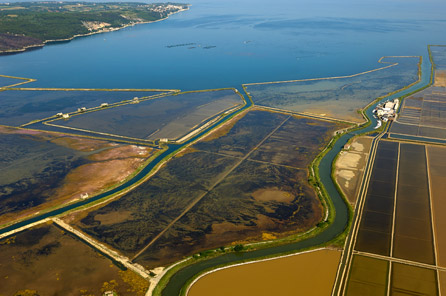-
Trip Ideas
- Triglav National Park
- Kozjansko Regional Park
- Notranjska Regional Park
- Regijski park Pohorje
- Škocjan Caves Regional Park
- Debeli rtič Landscape Park
- Goričko Landscape Park
- Kolpa Landscape Park
- Lahinja Landscape Park
- Ljubljansko barje Nature Park
- Logar Valley Landscape Park
- Pivka Lakes Nature Park
- Radensko polje Nature Park
- Sečovlje Salina Nature Park
- Strunjan Landscape Park
- Tivoli, Rožnik and Šišenski hrib Landscape Park
- Zgornja Idrijca Landscape Park
- Škocjanski Zatok Nature Reserve
-
Activities
- Triglav National Park
- Kozjansko Regional Park
- Notranjska Regional Park
- Regijski park Pohorje
- Škocjan Caves Regional Park
- Debeli rtič Landscape Park
- Goričko Landscape Park
- Kolpa Landscape Park
- Lahinja Landscape Park
- Ljubljansko barje Nature Park
- Logar Valley Landscape Park
- Pivka Lakes Nature Park
- Radensko polje Nature Park
- Sečovlje Salina Nature Park
- Strunjan Landscape Park
- Tivoli, Rožnik and Šišenski hrib Landscape Park
- Zgornja Idrijca Landscape Park
- Škocjanski Zatok Nature Reserve
-
Where to eat
- Triglav National Park
- Kozjansko Regional Park
- Notranjska Regional Park
- Regijski park Pohorje
- Škocjan Caves Regional Park
- Debeli rtič Landscape Park
- Goričko Landscape Park
- Kolpa Landscape Park
- Lahinja Landscape Park
- Ljubljansko barje Nature Park
- Logar Valley Landscape Park
- Pivka Lakes Nature Park
- Radensko polje Nature Park
- Sečovlje Salina Nature Park
- Strunjan Landscape Park
- Tivoli, Rožnik and Šišenski hrib Landscape Park
- Zgornja Idrijca Landscape Park
- Škocjanski Zatok Nature Reserve
-
Where to sleep
- Triglav National Park
- Kozjansko Regional Park
- Notranjska Regional Park
- Regijski park Pohorje
- Škocjan Caves Regional Park
- Debeli rtič Landscape Park
- Goričko Landscape Park
- Kolpa Landscape Park
- Lahinja Landscape Park
- Ljubljansko barje Nature Park
- Logar Valley Landscape Park
- Pivka Lakes Nature Park
- Radensko polje Nature Park
- Sečovlje Salina Nature Park
- Strunjan Landscape Park
- Tivoli, Rožnik and Šišenski hrib Landscape Park
- Zgornja Idrijca Landscape Park
- Škocjanski Zatok Nature Reserve

- Links
- Contact
- The Community of Nature Parks
-
Nature Parks
- Triglav National Park
- Kozjansko Regional Park
- Notranjska Regional Park
- Regijski park Pohorje
- Škocjan Caves Regional Park
- Debeli rtič Landscape Park
- Goričko Landscape Park
- Kolpa Landscape Park
- Lahinja Landscape Park
- Ljubljansko barje Nature Park
- Logar Valley Landscape Park
- Pivka Lakes Nature Park
- Radensko polje Nature Park
- Sečovlje Salina Nature Park
- Strunjan Landscape Park
- Tivoli, Rožnik and Šišenski hrib Landscape Park
- Zgornja Idrijca Landscape Park
- Škocjanski Zatok Nature Reserve
-
Sights
-
Nature Centers
SEČOVLJE SALINA NATURE PARK

Size: 750 ha
Year of foundation: 1990 - 2001
Founder:
1990 Piran Municipality, 2001 Republic of Slovenia
Administration:
Sečovlje Salina Nature Park
Importance:
6 natural values / whole area of the park is of ecological importance/ Natura 2000 area (SPA) for 130 bird species/ Natura 2000 area (SCI) for 4 animal species and 6 habitat types
International importance:
In 1993 declared for area of Ramsar's Convention
Krajinski park Sečoveljske soline
SOLINE Pridelava soli d.o.o.
Seča 115
6320 Portorož
+ 386 (0)5 672 13 50
The Sečovlje Salt Pans are, besides the Strunjan Salt Pans, one of the last salt pans in the Mediterranean, where salt is obtained manually with a method which is several hundred years’ old. The traditional nature- and human-friendly method of salt production has through time enabled the development of special living environments in the salt pans and near them. In the Sečovlje Salt Pans nature and man go hand in hand.
Salt pans might have formed on the accumulations at the mouth of the River Dragonja as early as in the Roman Period, but definitely in the Middle Ages. Through time, the salt pans were co-created in a considerate way by man. Traces of medieval salt panning can be found in the ruins of the former houses of the salt pan workers in the southern part of the park, which is called Fontanigge. The collection of salt stopped in the middle 1960s. On the Lera in the north of the salt pans, salt production never stopped; the work of salt pan workers is a living masterpiece, which has maintained and only slightly updated the medieval patterns and methods.
The large and shallow water areas in the embrace of the sub-Mediterranean climate have always been full of life. Not only of the salt pan workers, but also of animals and plants, thriving in the salty environment – plants called halophytes. In autumn, many of them typically colour red, when they extract all the nitrogen from the soil, which is poor in nutrients.
Out of the animal species, the saline habitat is a heaven for birds. Different biotopes have formed in the channels and pans and they represent an extraordinary habitat for bird species that find their night or shelter here. So far 296 species have been counted. The salt pans channels and tepids are distinguished by the South European toothcarp, while in summer visitors can notice the small, a little more than a centimetre large red coloured brine shrimp in the salty waters.
Seča 115
6320 Portorož
SIGHTS
- The museum of salt panning in Fontanigge (open in the warm half of the year).
- The visitors centre in Lera with a large model of the salt pans and information about salt and the salt pans.
- The Lera Shop with products from the salt pans and an exhibition gallery.
- Guided tours for groups of visitors upon reservation.
- Birdwatching and watching other animals and plants, which are rare elsewhere in Slovenia.
ACTIVITIES
- Walking on theme trails
- Bird watching
- Cycling
- Bathing at Lepa vida Spa










